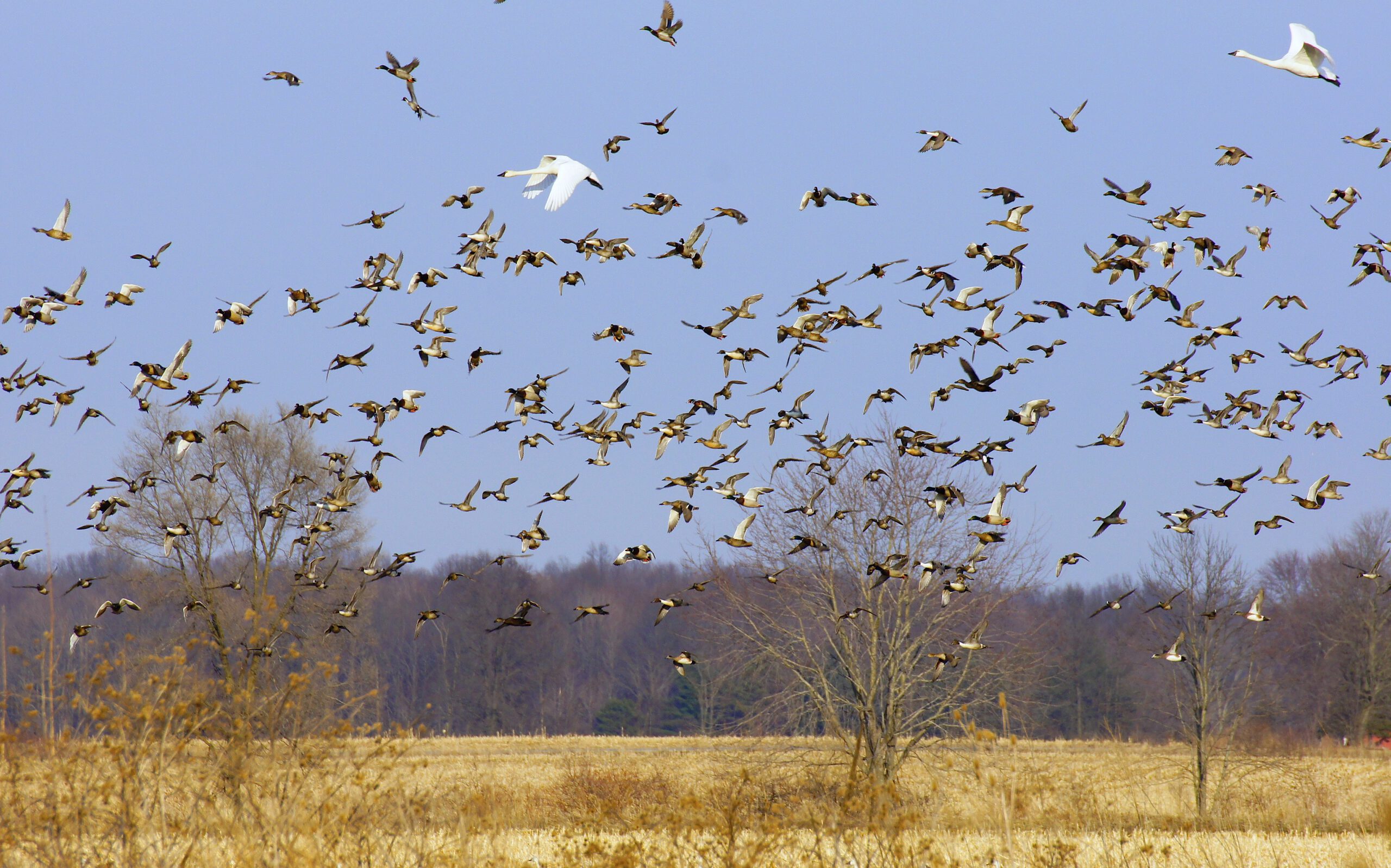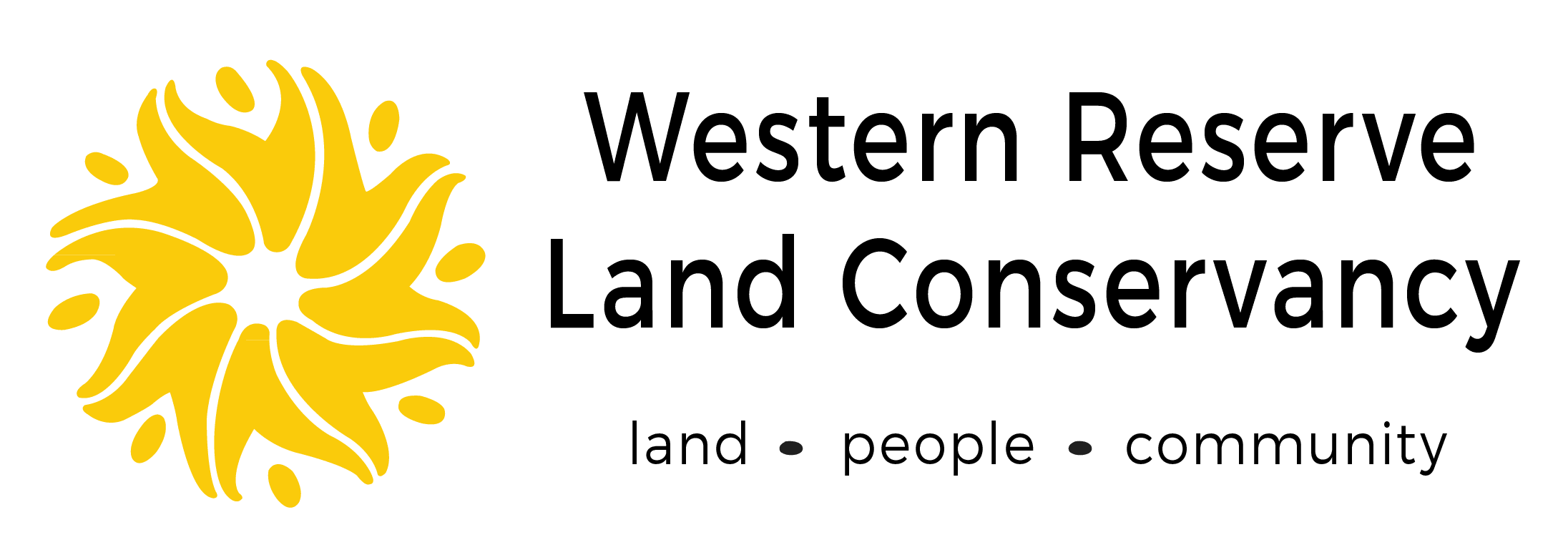
Conservation partners permanently preserve nearly 1,500 contiguous acres in Ashtabula, Trumbull counties
After more than ten years of concerted efforts involving numerous stakeholders, Western Reserve Land Conservancy has permanently preserved 1,477 contiguous acres in Orwell Township in Ashtabula County and Bloomfield Township in Trumbull County.
Referred to collectively as Sugar Island Preserve, the conservation complex includes the historic Grand Valley Ranch and Greg Cahlik Preserve. Sugar Island Preserve is located in a key wetland conservation corridor one mile north of the Ohio Division of Wildlife’s 9,000-acre Mosquito Creek Wildlife Area and five miles from the 7,400-acre Grand River Wildlife Area.
“In keeping with the Land Conservancy’s goal to create webs of strategically connected natural and agricultural land throughout the region, this project is an impactful acquisition that furthers both natural area conservation and farmland preservation efforts,” explained Brett Rodstrom, vice president of eastern field operations for the Land Conservancy.
Sugar Island Preserve is comprised of over 1,100 acres of diverse habitat for fish and wildlife including various successional stages of hardwood forest, wetlands, vernal pools, and old field habitat. The protection of these natural habitats provides shelter, food, and nesting areas for birds, fish, small and large mammals, and other wildlife. At least 20 plant and animal species listed by the State of Ohio as threatened or endangered have been documented on the property including the Northern Harrier, Sandhill Crane, American Bittern and Fireweed.
The protection of these natural habitats also improves water quality and the overall health of regional aquatic systems. Wise management of vegetated and forested buffers along the property’s many tributaries will help control run-off, prevent erosion, and mitigate flooding to downstream communities such as the Villages of Roaming Shores and Rock Creek. In addition, a significant aquifer on the property is recharged by expansive wetlands on site. This is critically important as the Village of Orwell supplies its community with water wells from an adjacent property downstream of Sugar Island Preserve.
Additionally, the Land Conservancy is engaging in one of the largest wetland restorations in Northeast Ohio on the property. The project will restore more than 200 acres of wetlands and redirect nearly three miles of Snyder Ditch to a flowing wetland complex with expansive floodplain connectivity. Snyder Ditch was originally constructed to drain a large portion of the historic ‘Bloomfield Swamp’ in 1913 for farming purposes. Today, Snyder Ditch flows north from Mosquito Creek Wildlife Area through the Grand Valley Ranch property and into Rock Creek before joining the Grand River just west of the Village of Rock Creek. Returning the ditch and much of the bordering agricultural land to wetland will reduce sediment and nutrient discharge into Lake Roaming Rock in the Village of Roaming Shores.
“Still, agriculture remains an important part of the local community and rural economy in northern Trumbull County,” noted Alex Czayka, eastern field director for the Land Conservancy, “the Land Conservancy was fortunate to find a local, private partner that helped ensure that prime nearby farmland was preserved.” W.I. Miller and Sons voluntarily protected 300 acres of farmland adjacent to the Sugar Island Preserve with a donated agricultural easement held by the Land Conservancy. The easement prevents the prime farmland from being converted to other non-agricultural uses.
The vision for Sugar Island Preserve was made a reality through essential partnerships with Bloomfield Township, Orwell Township, Ashtabula County, Trumbull County, The Cleveland Museum of Natural History, Ducks Unlimited, ODNR – Division of Wildlife, Ohio EPA, Ohio Public Works Commission, US Fish & Wildlife Service and W.I. Miller & Sons Farm. Moreover, the Land Conservancy and its partners secured upwards of $5 million in conservation and restoration funding for the 1,100-acre natural areas portion of the property from the Clean Ohio Fund, North American Wetlands Conservation Act (NAWCA), Great Lakes Restoration Initiative (GLRI) and the Ohio EPA’s Water Resource Restoration Sponsor Program.
“The conservation and restoration of Sugar Island Preserve would never have happened without the help of the local communities and our amazing partners,” Czayka emphasized. “We sincerely thank those that collaborated to make this visionary project a reality.”
